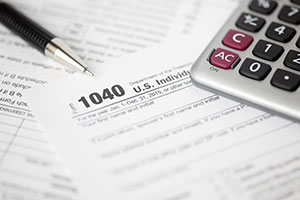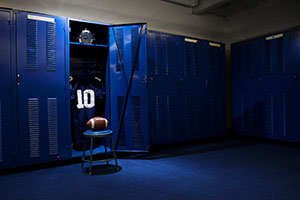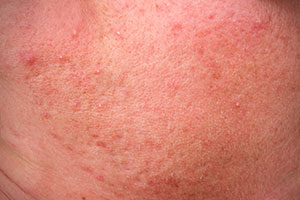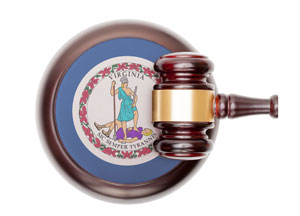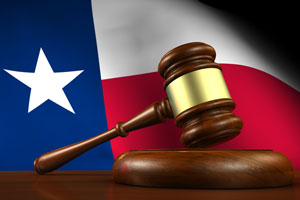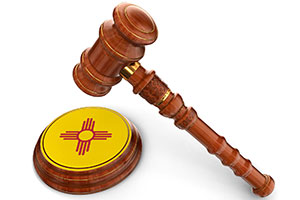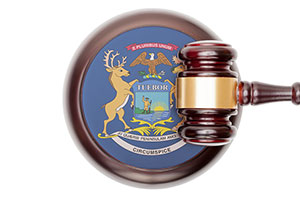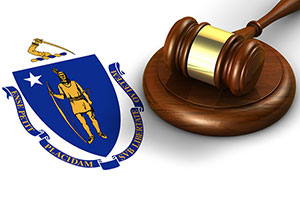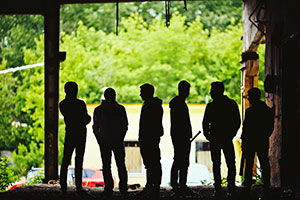The U.S. Court of Appeals for the Fifth Circuit reversed a substantial verdict against Johnson & Johnson and its subsidiary, DePuy Orthopaedics Inc., and ordered a new trial after determining that the plaintiff’s lawyer made misleading remarks about the independence of the expert witnesses who testified for the plaintiffs in the case.
While Johnson & Johnson and the pharmaceutical industry, as well as a Wall Street Journal editorial, have touted the appellate decision as a huge win, the court of appeals agreed that the evidence supported the jury’s finding that the implants are defective. In the end, nothing in the court’s opinion will prevent the next jury from arriving at the same result based on the same expert testimony.
Hip Replacement Litigation
The appeal involved the second “bellwether” trial against Johnson & Johnson for allegedly defective DePuy hip implants. Although the first trial ended in a verdict for Johnson & Johnson, the next three trials resulted in verdicts for the plaintiffs. All of the plaintiffs’ victories are on appeal.
The second trial involved five plaintiffs from Texas. The jury awarded a total of $502 million to the plaintiffs. The trial court reduced that award to about $152 million because Texas places a cap on punitive damages.
In addition to appealing the judgment, Johnson & Johnson brought a motion asking for the verdict to be thrown out because the “plaintiffs’ counsel, Mark Lanier, concealed payment arrangements with two key expert witnesses.” The trial judge denied that motion, but the court of appeals agreed that the statements may have influenced the verdict and ordered a new trial.
The DePuy Implant
The cases involve DePuy’s “metal on metal” hip implants. A metal “ball,” or head, is implanted into the femur, while a metal cup is implanted into the hip socket. A metal liner fits into the cup. The head rotates against the liner, essentially serving the same function in the hip as the “ball and socket” bones they replace.
Early versions of hip plants raised safety concerns. Those concerns were largely resolved by using ceramic or plastic liners rather than metal liners. However, some plastic liners cause problems because debris from worn plastic can dissolve the surrounding bone. The industry eventually solved that problem by sterilizing the plastic liner with radiation, giving it a much longer life.
The plaintiffs alleged that DePuy designed an implant that returned to a failed concept by using a metal liner. They alleged that Johnson & Johnson began a marketing campaign to lure doctors away from products with plastic liners by misrepresenting the advantages of its metal-on-metal design. The plaintiffs claimed that Johnson & Johnson rushed the product to market without conducting clinical tests that would have revealed its flaws, and that it supported its marketing campaign with academic papers that purported to be neutral but were actually authored by DePuy.
Johnson & Johnson argued that metal-on-plastic might be a better design for older patients but that its metal-on-metal design has advantages for younger patients. It also contended that it made comparative risk information available to doctors. The jury rejected those defenses and found in favor of the plaintiffs.
The Merits of the Case
The court of appeals rejected DePuy’s claim that the metal-on-plastic design was a different product entirely and therefore could not be regarded as a safer alternative design of a hip implant. The court also rejected DePuy’s claim that federal and state regulation of hip implants preempted product liability lawsuits for the defective design of the specific implant at issue. In addition, the court rejected DePuy’s seemingly inconsistent claim that its hip implant is “unavoidably dangerous” and therefore immune from product liability claims.
Johnson & Johnson’s claim that it marketed the implants with an adequate warning met with no greater success. The warnings did not address the specific complications caused by metallic debris that the metal-on-metal device produces, including the risk that bits of metallic debris will cause specific kinds of bone and tissue damage that will need to be alleviated by future surgery. While two of the plaintiffs were not entitled to judgment on the failure-to-warn claim because there was no evidence that their doctors ever read or relied upon the inadequate warnings, the evidence supported the judgment for the other three plaintiffs on their failure-to-warn claims.
Finally, the court rejected a number of defenses that Johnson & Johnson raised in an effort to insulate itself from the judgment against its subsidiary, DePuy. As a letter responding to the Wall Street Journal editorial pointed out, the editorial’s celebration of DePuy’s appellate victory was incomplete and misleading, given its failure to acknowledge that DePuy lost on issues that went to the merits of its trial defense. The appellate victory focused on alleged prejudice to DePuy caused by plaintiff’s counsel, not on DePuy’s challenges to evidence that, according to the appellate court, was sufficient to prove its liability.
Prejudicial Evidence
The court decided that DePuy and Johnson & Johnson did not receive a fair trial. First, the court considered whether the jury should have been allowed to hear evidence that Johnson & Johnson subsidiaries violated American law by paying bribes to Saddam Hussein’s government in Iraq and to other governments worldwide. The court questioned whether Johnson & Johnson’s claim to have an ethical corporate culture, consisting of “wonderful people doing wonderful things,” should have been impeached by a subsidiary’s misconduct, notwithstanding Johnson & Johnson’s admission of its responsibility for that misconduct in a plea agreement when it was prosecuted for its subsidiary’s criminal behavior. More importantly, the court thought plaintiffs’ counsel crossed the line by inviting the jury to hold Johnson & Johnson responsible for marketing defective hip implants based on the bad conduct of its subsidiary alone.
Johnson & Johnson also described itself as “employee-friendly,” a description allegedly rebutted by a letter written by an employee who complained of race discrimination and a workplace in which racial slurs were tolerated. Again, even if the letter was admissible (the court suggested that it was barred by the rule against hearsay), the court concluded that it was used in closing arguments to suggest that the jury should punish Johnson & Johnson for condoning race discrimination, an allegation that was unrelated to the claim that it sold defective hip implants.
It isn’t clear that either of those issues, by themselves, would have motivated the court of appeals to order a new trial. The court made clear, however, that it viewed a new trial as necessary because of comments that plaintiffs’ counsel made about expert witnesses.
Expert Witness Claims
The court of appeals described the trial as a “war of experts,” including engineers and medical scientists. Prior to trial, the plaintiffs disclosed Dr. Bernard Morrey, Sr. as an “uncompensated” expert. An expert who is not paid is not required to prepare an expert report.
Plaintiffs’ counsel offered to pay Morrey, but Morrey declined payment. The counsel then offered to make a contribution to a charitable institution of Morrey’s choice. Morrey agreed, and the plaintiff’s counsel contributed $10,000 to a Catholic school that Morrey had attended. During the trial, counsel “repeatedly emphasized Morrey Sr.’s independence . . . and contrasted that independence with the purportedly biased and self-interested work of DePuy’s doctors.”
Morey Sr.’s son, Dr. Morrey Jr., performed orthopedic surgery to correct damage caused by the DePuy implant to one plaintiff and evaluated another plaintiff. The trial court allowed Morrey Jr. to testify to facts beyond his medical treatment, including his opinion that the metal-on-metal implant design was unsafe, because plaintiffs had designated Morrey Jr. as a nonretained expert (not just as a treating physician) prior to the trial.
After the trial, the plaintiff’s counsel gave Morey Sr. a check for $35,000 and gave Morey Jr. a check for $30,000. Counsel also designated them as retained experts for future trials. The evidence suggested that Morey Jr. had always expected to be paid something but was surprised at the size of the generous payment he received.
The trial court concluded that no agreement to compensate the experts existed when they testified and that counsel therefore made no misrepresentations about their “independence” during the trial. The trial court also noted that, even if the post-trial checks were viewed as compensation, they were so small in comparison to the amount that Johnson & Johnson paid to its expert witnesses that their existence would not have influenced the jury’s verdict even if they had been disclosed.
The court of appeals, however, concluded that the plaintiff’s counsel either knowingly or unknowingly misled the jury and that this conduct prevented Johnson & Johnson from challenging the independence of the two experts. Whether the counsel’s misconduct affected the outcome was not the appropriate test. The only question was whether the misconduct prevented Johnson & Johnson from fully and fairly presenting its case.
If Johnson & Johnson had known of the pretrial contribution of funds to a charity of Dr. Morey Sr.’s choice, or had known that Dr. Morey Jr. expected to be compensated, Johnson & Johnson would have relied on those facts in challenging the purported independence of the two experts. Those facts might not have affected the outcome, but Johnson & Johnson was entitled to a fair trial, and the court decided that Johnson & Johnson did not receive a fair trial because those important facts were never disclosed. (Of course, Johnson & Johnson could have asked Dr. Morey Jr. during cross-examination whether he expected to be compensated, an omission the appellate court did not address, but Johnson & Johnson arguably had no reason to ask the question when it had no reason to expect an answer that would assist its defense.)
The court’s suggestion that a gift to charity should be treated as compensation that induces testimony might be strained in the absence of evidence that Morey Sr. benefited from the contribution or that it influenced his decision to testify. Nor was there compelling evidence that Morey Jr.’s expectation of being paid was induced by plaintiff’s counsel, who clearly made no express promise to pay for the expert’s testimony.
Still, the evidence that made the appellate court suspicious could arguably have caused the jury to be suspicious of the experts’ independence and might have been used to the defendants’ advantage at trial, so it is not entirely surprising that the court vacated the judgment and ordered the case to proceed to trial again. Since none of the substantive evidence about the defective hip implants is likely to differ at the new trial, it is not clear that the new trial will produce a significantly different result. In fact, Johnson & Johnson is taking a risk that the next jury will award even more in damages, but that is a strategic risk that a litigant who seeks a new trial must accept.


